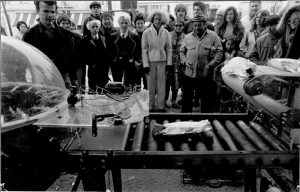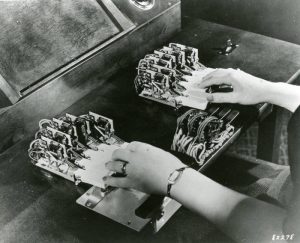It may have started with the spy phone built into secret agent Maxwell Smart’s left shoe on the espionage comedy Get Smart (NBC, 1965-70.) When Max needed to use or answer his shoe phone, he took off his shoe, removed the rubber sole to reveal the rotary phone dialing device. When he dialed the number 117, his shoe would convert into a gun. In his left heel were two pellets: an exploding one and a suicide pill. Max’s right heel concealed a smoke-screen pellet which left a trail of heavy smoke when crushed.
The Return of Maxwell Smart (1980), the shoe phones were updated to include touch-tone dialing and an answering machine.
![shoe_phone[1].jpg](http://www.we-make-money-not-art.com/xxx/shoe_phone%5B1%5D.jpg)
On February 17th, 2002, the shoe phone used by agent Maxwell Smart was included in the exhibition “Spies: Secrets from CIA, KGB and Hollywood,” a collection of real and fictional spy gear in California.
Maxel Smart shoe phone
But smart shoes are getting a life out of fiction series:
Despina Papadopoulos, the founder of Studio 5050, had the idea for the ClickSneaks while walking down a cobblestone street, wearing sneakers next to a friend wearing stilettoes.
She recorded the “click” sound of high heels on a voice chip and had it activated on each step the revamped sneakers take. In fact, a speaker, amplifier and a sensor acting as a �switch� on the sole of each foot, transform these seemingly normal sneakers into a flighty performance.
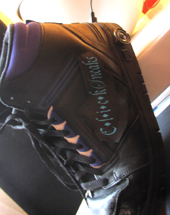
From HorizonZero.
Wearing the Sensor Shoe, designed by Professor Joe Paradiso, MIT Media Lab, a dancer can create music.
![image_468[1].jpg](http://www.we-make-money-not-art.com/xxx/image_468%5B1%5D.jpg)
Electronic sensors are built into this ordinary shoe to pick up foot movement and changes in pressure. The short antenna at the back of the shoe transmits data from each sensor to a nearby computer. The computer is programmed with a set of rules that map the data to particular sounds. A digital music synthesizer produces the sounds, which are then heard through speakers.
A video of Mark Haim New York dancer performing live with the Sensor Shoes at the Museum of Science March 4, 2001.
From Clippings and Eyebeam ReBlog networked_performance.
Last year, UMass Lowell graduate Richard Namay Castle designed sensor shoes that can assist blind people by transferring objects from a visual plane to a vibrating one.
If the person wearing the shoes, called sensory systems for the blind, walks towards a wall, both the top and front vibrators start to shake, indicating a tall object is in his path. If he heads towards a couch, only the front vibrators work, meaning a shorter object lies ahead.
The infrared sensors can detect things from a meter away. Vibrating motors begin to shake once they detect an object, then move faster as the wearer moves closer.
For parents on a tight budget, the sporting goods firm K2 has put on the market few weeks ago a shoe called “Max, the Worm” that can grow an entire shoe size at the push of a button.
The shoe features a flexible design with an extending concertina panel between the toe and heel and when the silver button is pushed, the shoe expands like an accordion.
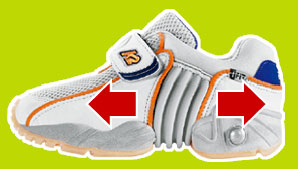
The shoe costs �33 and has also been approved by orthopaedic specialists.
Now comes my favourite:
Wei-Chieh Tu’s height-adjustable shoes can be raised through a 38� angle and locked to meet the shifting needs of your feet. You can wear 0�-38� as a flat shoe while dashing to the office, release the heel to a halfway height for comfort throughout the workday and, when evening falls, max out the heel for a more glamourous look.
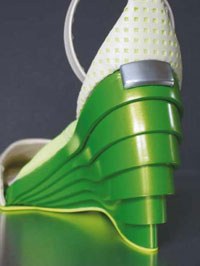
From Frame, via Treehugger.
Previous posts: Walking online, Walking generator of energy, MP3 runner, Running shoes are getting smart.
Related: Raven computerized shoe ThinkShoe Technology, which features a computer which automatically senses your activity level and adjusts to assist in performance (via 21f),
the Walking Words shoe equipped with an LED display which turns on and off with every step the wearer takes, displaying a word or image hanging in the air behind the shoe (via personaldebris.)


